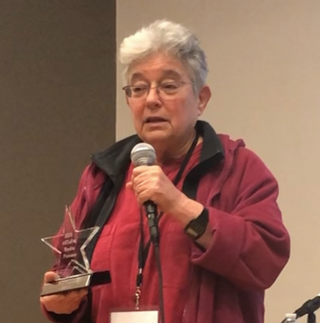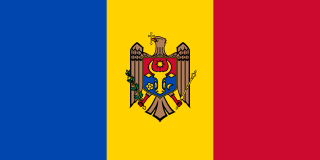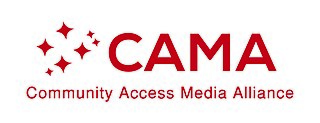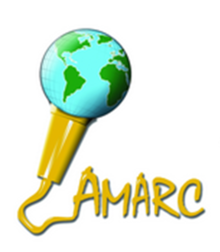
Community radio is a radio service offering a third model of radio broadcasting in addition to commercial and public broadcasting.
Internet censorship in Tunisia significantly decreased in January 2011, following the ouster of President Zine El Abidine Ben Ali, as the new acting government removed filters on social networking sites such as YouTube.
The New World Information and Communication Order is a term coined in a debate over media representations of the developing world in UNESCO in the late 1970s early 1980s. The NWICO movement was part of a broader effort to formally tackle global economic inequality that was viewed as a legacy of imperialism upon the global south.

The mass media in South Africa has a large mass media sector and is one of Africa's major media centres. While South Africa's many broadcasters and publications reflect the diversity of the population as a whole, the most commonly used language is English. However, all ten other official languages are represented to some extent or another. Afrikaans is the second most commonly used language, especially in the publishing sector.
The Tunisia Monitoring Group (IFEX-TMG) is a coalition of 21 free-expression organisations that belong to the International Freedom of Expression Exchange (IFEX), a global network of non-governmental organisations that promotes and defends the right to freedom of expression and freedom of the press.
WORT is a listener-sponsored community radio station, broadcasting from 118 S. Bedford St. in Madison, Wisconsin, United States. WORT offers a range of programming.
The mass media in Georgia refers to mass media outlets based in the Republic of Georgia. Television, magazines, and newspapers are all operated by both state-owned and for-profit corporations which depend on advertising, subscription, and other sales-related revenues. The Constitution of Georgia guarantees freedom of speech. Georgia is the only country in its immediate neighborhood where the press is not deemed unfree. As a country in transition, the Georgian media system is under transformation.

The International Programme for the Development of Communication is a United Nations Educational, Scientific and Cultural Organization (UNESCO) programme aimed at strengthening the development of mass media in developing countries.

Frieda Lindfield Werden is an American and Canadian radio producer. She is the co-founder and producer of the weekly radio series WINGS: Women's International News Gathering Service, which debuted in 1986 and has been in weekly syndication for more than twenty-seven years. Produced by and about women, WINGS broadcasts on non-commercial radio stations worldwide.
The mass media in Armenia refers to mass media outlets based in Armenia. Television, magazines, and newspapers are all operated by both state-owned and for-profit corporations which depend on advertising, subscription, and other sales-related revenues. Armenia's press freedoms improved considerably following the 2018 Velvet Revolution.
The mass media in North Macedonia refers to mass media outlets based in North Macedonia. Television, magazines, and newspapers are all operated by both state-owned and for-profit corporations which depend on advertising, subscription, and other sales-related revenues. The Constitution of North Macedonia guarantees freedom of the press and of expression, yet they are not upheld impartially by the authorities. As a country in transition, North Macedonia's media system is under transformation.

The mass media in Moldova refers to mass media outlets based in the Republic of Moldova. Television, magazines, and newspapers are all operated by both state-owned and for-profit corporations which depend on advertising, subscription, and other sales-related revenues. The Constitution of Moldova guarantees freedom of speech. As a country in transition, Moldova's media system is under transformation.
The print, broadcast and online mass media in Burma has undergone strict censorship and regulation since the 1962 Burmese coup d'état. The constitution provides for freedom of speech and the press; however, the government prohibits the exercise of these rights in practice. Reporters Without Borders ranked Burma 174th out of 178 in its 2010 Press Freedom Index, ahead of just Iran, Turkmenistan, North Korea, and Eritrea. In 2015, Burma moved up to 144th place, ahead of many of its ASEAN neighbours such as Singapore, as a result of political changes in the country.
Television is the most popular medium in Russia, with 74% of the population watching national television channels routinely and 59% routinely watching regional channels. There are 6,700 television channels in total. Before going digital television, 3 channels have a nationwide outreach : Channel One, Russia-1 and NTV.
Mass media in Ivory Coast is controlled by the government. Audiovisual communications are regulated by the Conseil national de la communication audiovisuelle (CNCA), an administrative arm of the national government.
Media development involves capacity building for institutions or individuals related to freedom of expression, pluralism and diversity of media, as well as transparency of media ownership. Media development plays a role in democracy and effective democratic discourse through supporting free and independent media.

The Community Access Media Alliance (CAMA), also known as the Access Radio Network, is a group of twelve New Zealand community radio media organisations. The stations were established between 1981 and 2010 and have received government funding since 1989 to broadcast community programming and provide facilities, training and on-air time for individuals and community groups to produce programming.
World Radio Day is an international day celebrated on the 13th of February each year. The day was decided by UNESCO on November 3, 2011 during its 36th conference.

Nadia Abdulaziz Al-Sakkaf is a former Yemeni Minister and politician. She was the editor in chief of the Yemen Times from 2005 until 2014, before becoming Yemen's first female Minister of Information. She fled Yemen in 2015 after the coup and is currently an independent researcher in politics, media, development and gender studies based in the United Kingdom. In 2011, Al-Sakkaf gave a popular TED talk called "See Yemen through my eyes" which had over 3 million views.
The Ghana Community Radio Network (GCRN) is an association of Community Radio stations in Ghana broadcasting in local languages across rural communities nationally. GCRN was established in 1999 as a community radio service which offers a third model of radio broadcasting in addition to commercial and public broadcasting. Thereby association's aim is: "GCRN aims to enhance the use and build the capacity of community radio to enable marginalized communities and groups to generate and share their knowledge and experience, to participate in discourse and decision-making at every level, to develop the richness of their culture, and to strengthen their communities as part of the national and global family."







